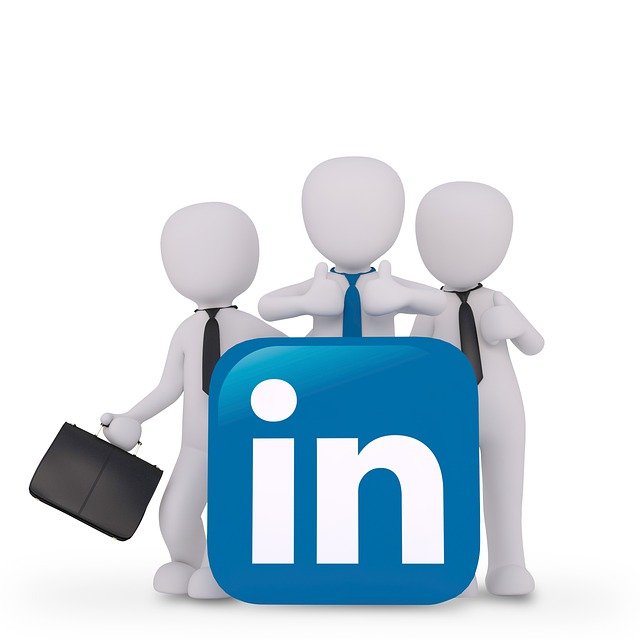Paul Haarman: 7 Ways to build maintain a strong LinkedIn presence

LinkedIn is a social network, but it’s geared toward business professionals. You’ll need to build your online presence as you would on any other social networking site. But because LinkedIn users are specifically looking for new career opportunities and connections, you’ll also want to make sure the information you share highlights your professional expertise and always represents you in a positive light.
1: Update LinkedIn with Current Information
According to Paul Haarman paste your resume into your profile and be sure that it and all of the other content on your profile — such as recommendations — is up-to-date. It’s also critical that you keep an eye on what people post about you so that if they inadvertently include something inaccurate or out of date, you can correct them privately or remove outdated information, if necessary.
2: Focus on Your Strengths but Don’t Forget Your Experience
Your profile is an opportunity to list your strengths and skills without focusing too much on your work history. For instance, you might start by saying, “I’m an effective communicator who’s used to working both independently and collaboratively.” Then follow it up with something about the technologies you use or the people with whom you work best. The point here is that potential employers are looking for someone who can already do the job they’re hiring for — not just show proof of past employment. So focus first on what makes you a perfect fit before talking about where you’ve worked before.
3: Keep Credentials Out of Your Profile
In addition to not focusing on your work experience, be wary about including professional credentials in your profile. You might think that a terminal degree or a certification in a relevant field would help you stand out from the crowd, but in reality, it often does the opposite. For example, if you were to list your MBA or PhD in philosophy as an achievement, potential employers might think that degree isn’t relevant for the career path they’re hiring for. So skip professional credentials and instead focus on skills and strengths it will only make you look like you’re trying too hard to prove yourself. If people want additional information, they’ll ask for it.
4: Network with Others Online
Using LinkedIn’s tools for networking is an easy way to strengthen connections with others online and off. When you connect with people, the site alerts them by e-mail that there’s been an update to their contact information (usually just giving them the basics of what you changed). Plus, when someone views your own profile after accepting your connection request, LinkedIn sends an e-mail to let you know that someone is interested in reaching out to you. You can then choose how much information about yourself you want to share with that person, either through LinkedIn’s online messaging service or by adding the individual as a contact on your own e-mail program. This kind of networking helps potential employers find you and assess your professional qualifications for themselves!
5: Make Your Connections Useful
Networking is all about helping others so they’ll return the favor when it’s time for you to be helpful. To do this, seek out former coworkers who are now at similar companies and ask them what they’re doing differently since they’ve made the move. Then pass along what they say to current colleagues who are looking to make their own career moves. A good way to begin this networking process is by asking your connections what they would suggest you read, subscribe to, or watch related to your profession. This will not only help you learn more about the industry but also give you something helpful and relevant to share with others.
6: Be Active on LinkedIn Groups
Joining groups on LinkedIn enables you to network even further than just with your direct connections. When adding someone as a connection, be sure that he or she agrees first! Then read the group’s “group description” before deciding whether it’s worth joining because not all of them are useful for professional networking purposes. For instance, some (such as “I Love Starbucks”) might be great for connecting with friends or just feeling a part of a community, but could have little to do with your actual profession. So read the description carefully to see how relevant it is before joining because you might not get any professional value out of participating in such groups.
7: Don’t Overdo It
Don’t worry about being everywhere on LinkedIn — just be everywhere where it’s going to help you the most. If you try too hard, potential employers aren’t going to notice your profile anyway. So rather than spending all night trying to get someone from every group and industry imaginable as a connection, focus on getting people whose work experience will add the most value when your own job search begins. For example, if there’s an organization you’re really interested in and whose employees seem to be doing work similar to yours, then reach out and ask for an informational interview.
Conclusion:
LinkedIn is a great tool for building your network and connecting with others in an online environment, says Paul Haarman. It’s easier to use than updating your own website or blog, and it automatically gives you the opportunity to connect with other professionals on the site right away. Plus, you can add new content whenever you feel like it through what you share in your public profile even if that only includes the latest news about yourself while skipping lengthy articles on research topics completely. But while LinkedIn is a great way to get noticed online quickly, remember not to overdo it!





